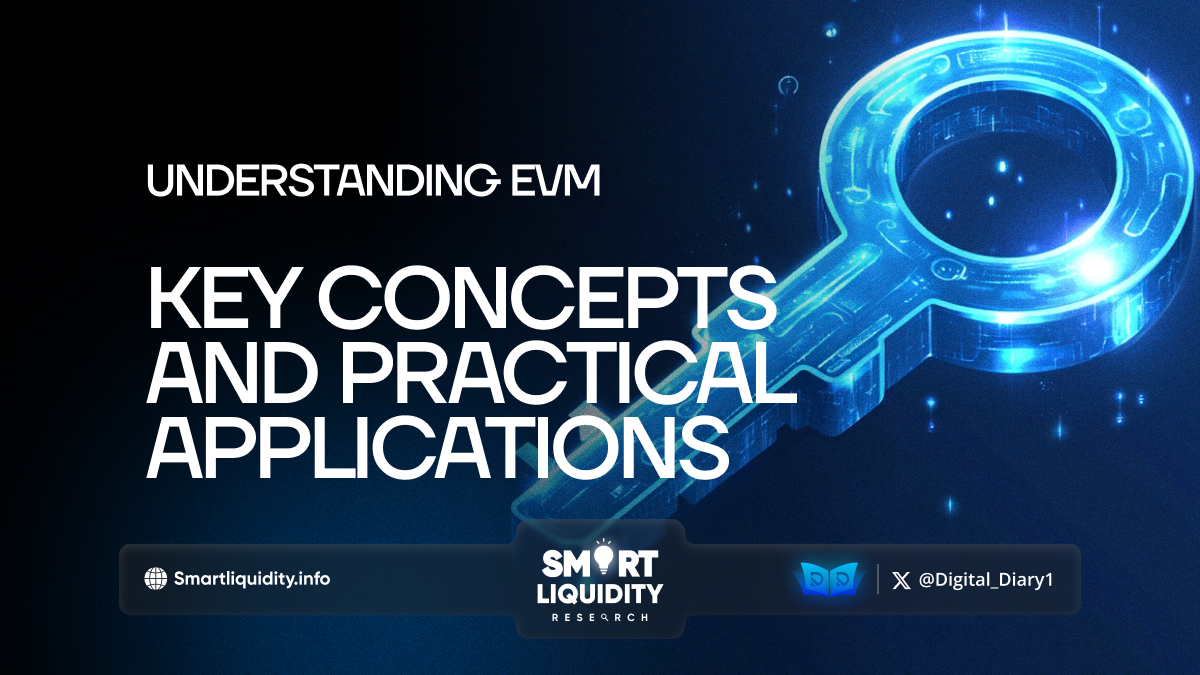Understanding EVM: Key Concepts and Practical Applications


The Ethereum Virtual Machine (EVM) is at the heart of Ethereum’s blockchain, acting as a decentralized global computer that runs smart contracts. It’s responsible for processing transactions, executing code, and ensuring the security and immutability of the Ethereum blockchain. Let’s delve into key concepts of the EVM and explore its practical applications.
Key Concepts of the EVM
1. Smart Contracts:
A smart contract is a self-executing contract where the terms are directly written into code. The EVM executes these contracts in a decentralized environment, eliminating the need for intermediaries. Once deployed on the blockchain, smart contracts are immutable, making them a secure and reliable tool for executing agreements.
2. Gas and Gas Fees:
Every computation in the EVM costs “gas,” a unit that measures the amount of computational effort required to execute operations. Gas fees incentivize miners to process transactions and execute smart contracts, and they prevent network abuse by discouraging overly complex computations.
3. Bytecode:
Smart contracts are written in high-level programming languages like Solidity and compiled into bytecode before being deployed. The EVM reads and executes this bytecode, which is a low-level representation of the contract’s logic.
4. Storage and Memory:
The EVM operates with two types of data handling: storage and memory. Storage is permanent and tied to the blockchain, meaning data written there persists across transactions. Memory, on the other hand, is temporary and resets after the execution of a contract.
5. OpCodes:
The EVM uses a set of low-level instructions called OpCodes to execute bytecode. Each OpCode corresponds to a specific operation in the smart contract, such as adding numbers or storing information.
Practical Applications of the EVM
1. Decentralized Finance (DeFi):
The EVM powers numerous DeFi protocols, enabling decentralized lending, borrowing, and trading without intermediaries. DeFi applications like Uniswap and Aave rely on EVM smart contracts to automate financial services.
2. Non-Fungible Tokens (NFTs):
EVM-based platforms like Ethereum enable the creation and trading of NFTs. Smart contracts govern the ownership and transfer of these unique digital assets, ensuring that they can be securely traded on marketplaces such as OpenSea.
3. Decentralized Autonomous Organizations (DAOs):
DAOs are organizations governed by smart contracts, enabling decision-making processes to be transparent and decentralized. The EVM allows DAOs to function autonomously by executing predetermined rules without external interference.
4. Cross-Chain Interoperability:
As Ethereum leads the way in the blockchain ecosystem, EVM compatibility has become a standard for various other chains like Binance Smart Chain (BSC) and Avalanche. This ensures that developers can seamlessly port their smart contracts across multiple chains without re-writing code.
5. Supply Chain Management:
The EVM can be used to develop smart contracts that track goods across supply chains. These contracts provide transparency and trust, ensuring that all parties involved in the process can verify the status and authenticity of products.
6. Gaming and Virtual Worlds:
Many blockchain-based games leverage the EVM to create in-game economies, enabling players to trade assets, earn rewards, and participate in virtual economies. Games like Axie Infinity use EVM to power their decentralized economies, allowing players to earn tokens that hold real-world value.
Conclusion
The EVM is the engine that drives the Ethereum network, enabling a wide range of decentralized applications (dApps) across industries. From finance and NFTs to gaming and DAOs, the practical applications of the EVM continue to grow as blockchain technology advances. Understanding the EVM’s key concepts not only empowers developers to build innovative solutions but also highlights the endless possibilities that decentralized technologies offer.




